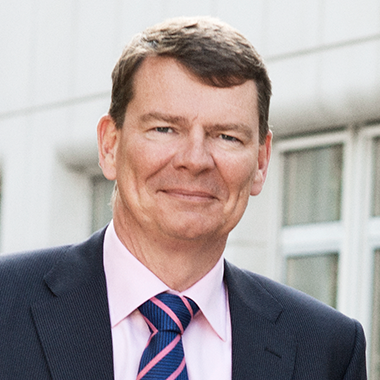Leading people is super rewarding, but extremely complicated - I wish I could do better.
Hans Henrik Beck, Managing Partner in QVARTZ

I am truly fascinated by the power of Big Data and Digitalisation. In QVARTZ, we are working extensively with clients on both disciplines and I do believe that we have only scratched the surface with regard to what can and must be done within these two areas. In my view, we have only seen the tip of the iceberg in relation to how these new capabilities will transform the way we live our lives, but perhaps more so the way we build, grow, operate and lead our businesses.
Having said that, I am, however, even more intrigued by the yet still under-exploited power of People. In QVARTZ, we had the pleasure of hosting an event with the futurist of Salesforce.Com, Peter Schwartz, and he coined it extremely well by saying something like: “Not in a thousand years will AI be able to replace the unique features of the human brain and even more so the human heart. There is no easy artificial replacement of either human intuition and/or empathy”.
Leading machines and assets, which has been the main focal point throughout the entire industrial revolution, is very much a rational numbers and brain game, where most focus has been centred on making 1 + 1 become 1.5, driving scale and standardisation to new and unseen heights. Building efficient machines should no longer be at the top of the strategic agenda, but rather the notion of releasing the full power of human beings.
The main role of any leader is and always has been to uncover and release the enormous collective force of having a unified, talented and prepared team (or organisation) staying loyally committed to each other and the task at hand, right to the end. In QVARTZ, we only have one asset, one product and one service, that is PEOPLE and hence every day we are trying to release the accumulated force of our people.
But, we have come to acknowledge that leading people is extremely complicated. It is not only utterly more difficult but also completely different from leading machines and assets, since it is almost only about letters and hearts focusing on making 1 + 1 become 3, bringing opposites together.
We try and try, but we still make a lot of (stupid) mistakes. In my view, we are probably only at a three on a scale of one to ten. Looking at our ranking in Universum (we are ranked no. 1 on inspiring leadership) and comparing what we do with what I see when visiting other companies, it does, however, seem like we are doing better than most. With that disclaimer and without pretending that we have found the silver bullet, I have highlighted four of many important elements, which we and I try to apply when leading QVARTZ:
Leading is very much about fighting gravity and ensuring that the flow of initiatives and actions do not have to stop at a red light (for long) in the matrices between vertical power and scale on one hand and horizontal impact and results on the other. All companies are trying to become customer centric which of course is impossible if all leaders in an organisation are only leading downwards and only to a very limited extend use time leading sideways, since customer centricity is by default the outcome of a horizontal process.
Leading is very much about configuring teams, which consist of people who are individually unique and collectively perfect (in QVARTZ known as I.U.C.P). Nobody is perfect – “not even Trump” – but if you are capable of putting together the right constellation of unique people and making them perform as a unified team, you can actually come close to being collectively perfect. To be able to do this effectively, all people will of course have to float almost freely across organisational units and be allocated real time to the most value-creating activities. A prerequisite for making this work is of course that the collaborative norms and ambience across all parts of the organisation are supporting this corporative approach.
Leading is very much about leading upwards and thus for seniors leaders about being led, i.e. lead and be led. To ensure speed and agility in any organisation, people must be made accountable and not only responsible for what they do. The vital difference between the two is that accountable people will do what is required to succeed, whereas responsible people only will do what you ask them to do. Unless you give timely and precise guidance every time, the latter one will for obvious reasons become very slow and extremely bureaucratic, which of course is a great danger when coping with a world changing faster and faster.
Leading is very much about ensuring (a tsunami of) meaningful conversations, i.e. conversations which make the purpose and the “big why” of what we have to do – even the small things – clear to everyone in the team. Meaningful conversations are very much about appreciating individual strengths and differences rather than getting frustrated due to the lack of fixed procedures and uniformity. Meaningful conversations are very much about ensuring the individual flexibility, which will make each person on the team perform at their best, since it will allow them to bridge and balance private life and work much better. Meaningful conversations are simply the key to ensuring meaningful work.
As mentioned above, this is not a silver bullet, but rather four simple leadership enablers, which we try to apply in QVARTZ every day. It is definitely not easy to make it work, but when we do succeed, you get the fantastic joy of seeing teams that consistently deliver faster, smarter and more and not least in great spirits, i.e. making 1 + 1 become 3 or perhaps even making 1 + 1 + 1 become 5.


